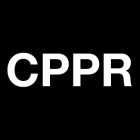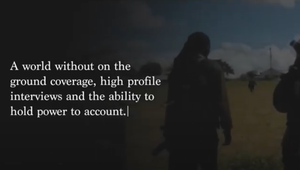
French Speaking Markets Provide Advertisers with Big Opportunities

It may not be marked in your diary, but la fête de la Francophonie is an annual event that takes place every year on the 20th March – and it’s close to the hearts of many of the French speakers around the world. On this day cultural events are held worldwide to celebrate the richness and vibrancy of French-speaking across 77 countries on 5 continents. In dozens of cities as diverse as Oslo, Abidjan, Los Angeles, or Tokyo, participants can join and enjoy film nights, theatre productions, concerts, book fairs, word games and much, much more, in recognition of their love for the language.
The reason I mention this is, given that the English language is deeply rooted as the primary language in the global business landscape, culture tends to be the main motivation for studying and learning French for non-native speakers today. It makes sense. After all, France is the most visited country in the world, it leads the way with fashion and style and has a strong reputation for good food and fine wine. In the Soft Power rankings compiled by PR firm Portland, in association with Facebook and research company ComRes, the country ranks third for culture - behind the US and the UK - and first for engagement with the global community.
Interestingly,
according to Ipsos Affluent Survey 2016, being multi-lingual is a likely sign
of success, with a third of high income Europeans practising at least two
foreign languages and 54% of them enjoy watching foreign channels. French is
the second most widely known language outside of Francophone countries (France,
Switzerland, Belgium, Luxembourg), with an overall penetration of 15%. It ranks
highest in Southern Europe, noticeably in Italy with 38% of French-speakers in the
affluent population. And in English-speaking countries it remains the primary
foreign language learned. So, for advertisers seeking educated, cultured
individuals, primary and secondary French speakers should be a key
demographic.
For
instance, the research shows that people who use French as a secondary
language, are more likely to hold masters degrees and to travel frequently: 15%
made six or more international air trips in the past year vs 13% for the total
survey universe. They also enjoy higher than average personal income, and are
more prominent in top business positions (C-suite).
The cultural appetite of the French-language community is confirmed by the Ipsos survey, with higher than average visits to cinemas, museums and art galleries.
Interest for French culture and lifestyle extends well beyond the Francophone community, with a large population of French speaking audiences in Asia and the Middle East for example. However the largest growing French speaking audience which is fuelling interest amongst advertisers is Africa.
The Paris-based Organisation Internationale de la Francophonie (OIF) estimates that 212 million people around the world are brought up speaking French, with 55% of them living in Africa. For demographic experts, the continent is expected to account for more than half of the population growth over the next three decades. If the education targets are met, the French speaking population could treble and reach 650 million by 2060 according to OIF.
One of the most interesting stats from the UN is that, at its current rate of growth, Nigeria (currently the 7th largest country in the world) is set to overtake the US as the 3rd most populated country by 2050!
The effects of both a rise in population and also greater wealth is likely to fuel the appetite for consumer goods and household equipment throughout Africa. According to Celia Collins, Managing Director at Carat Johannesburg: "Many global and large regional marketers – like P&G, Coca-Cola, General Motors, Woolworths, Old Mutual, Diageo, Peugeot – who are targeting and expanding through the development and building of major production plants, will continue to invest heavily into their advertising on the continent."
It’s therefore not surprising that across TV5Monde and France 24 we have seen spend on sponsorship and advertising from African advertisers rise by 70% between 2011 and 2015, with notable brands being Castel Beer and GSK, along with banks and government institutions. These organisations are using international channels like ours to reach African audiences because there are strict regulations in Africa and there is no advertising on national stations. International channels provide a way around these issues and a direct route to affluent French speakers across the globe.
Using international media campaigns (rather than multi-national campaigns that target multiple countries via a number of national channels) can also be more cost effective because there are fewer buying points to deal with and less creative is required (see www.intvgroup.org for a useful guide on planning international campaigns).
As the influence and spending power of French speakers increases, it seems it’s time for advertisers to say ‘bonjour’ to Francophones and embrace the opportunities they are opening up for them.










